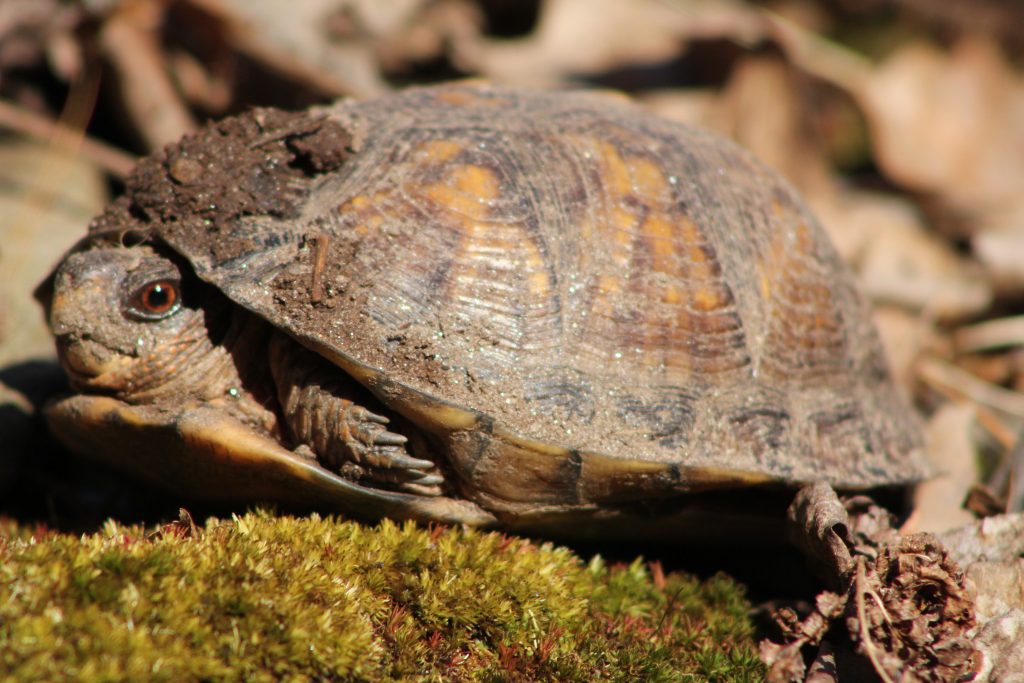
This #sciencesaturday recognizes one of my favorite Preserve residents, the Eastern Box Turtle (Terrapene carolina). These reptiles are most easily identified by their high domed upper shell (called a carapace), four clawed feet, and ability to hide entirely in their shell. Turtle shells are made out of bone and cartilage, and there are nerve endings in it so they can feel when anything touches them! The bottom shell, or plastron, has a hinge, which develops when the juveniles are four to five years old. It allows the turtles to tuck their head, limbs, and tail into the shell when startled or threatened, and close the front just like a box. Once safely hidden inside, the shell is extremely difficult to pry open, and the box turtle can wait out any danger.
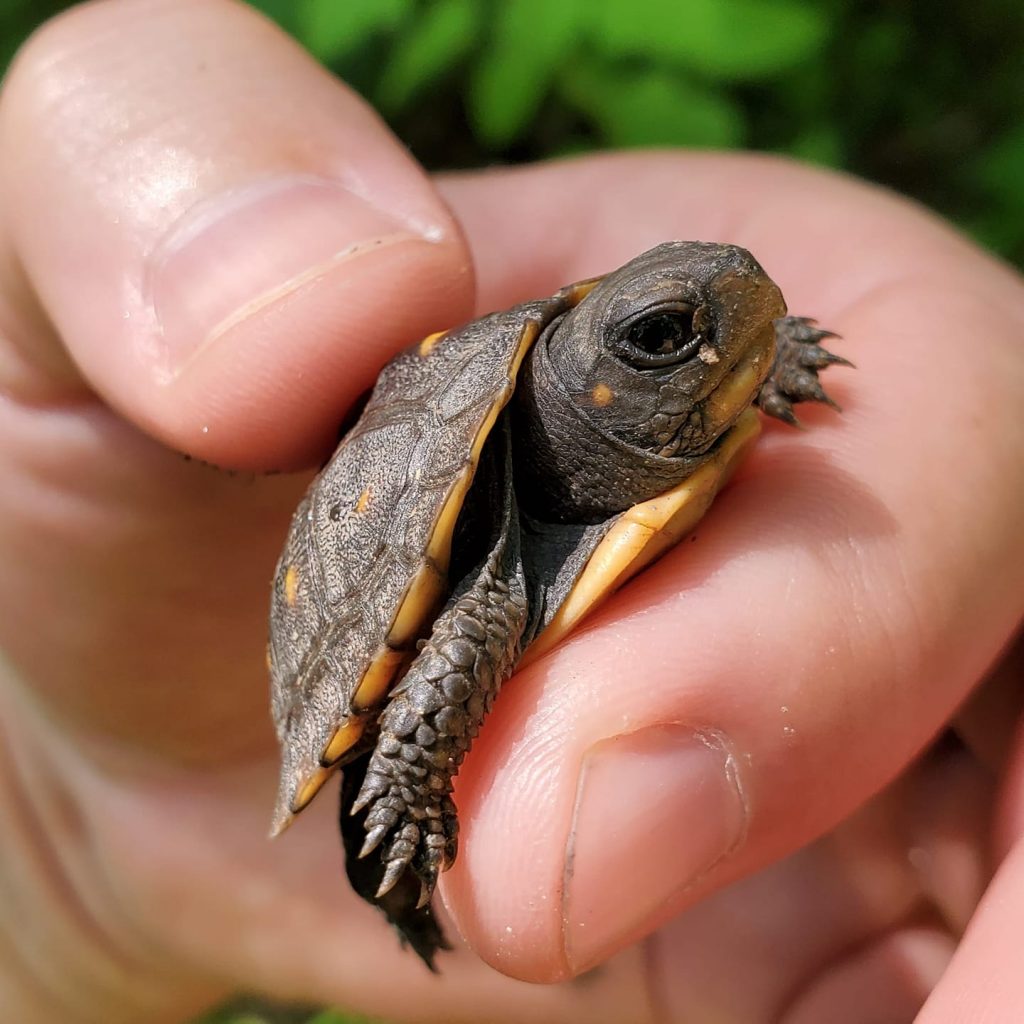
Female box turtles lay three to six eggs during June and July, using their back legs to dig a hole. They also tend to pick previously disturbed areas, such as the edges of our extensive trail system at the Preserve! The female then recovers the nest with dirt and leaves the eggs to hatch by themselves in two to three months. The temperature of the nests determines the hatchling sex, as warmer ones usually produce females, and cooler nests produce males. Young box turtles, so small and mostly brown, camouflage well with the forest floor, and are easily missed on a hike. Adults can live 30 to 40+ years in the wild but some can live over 100 years!
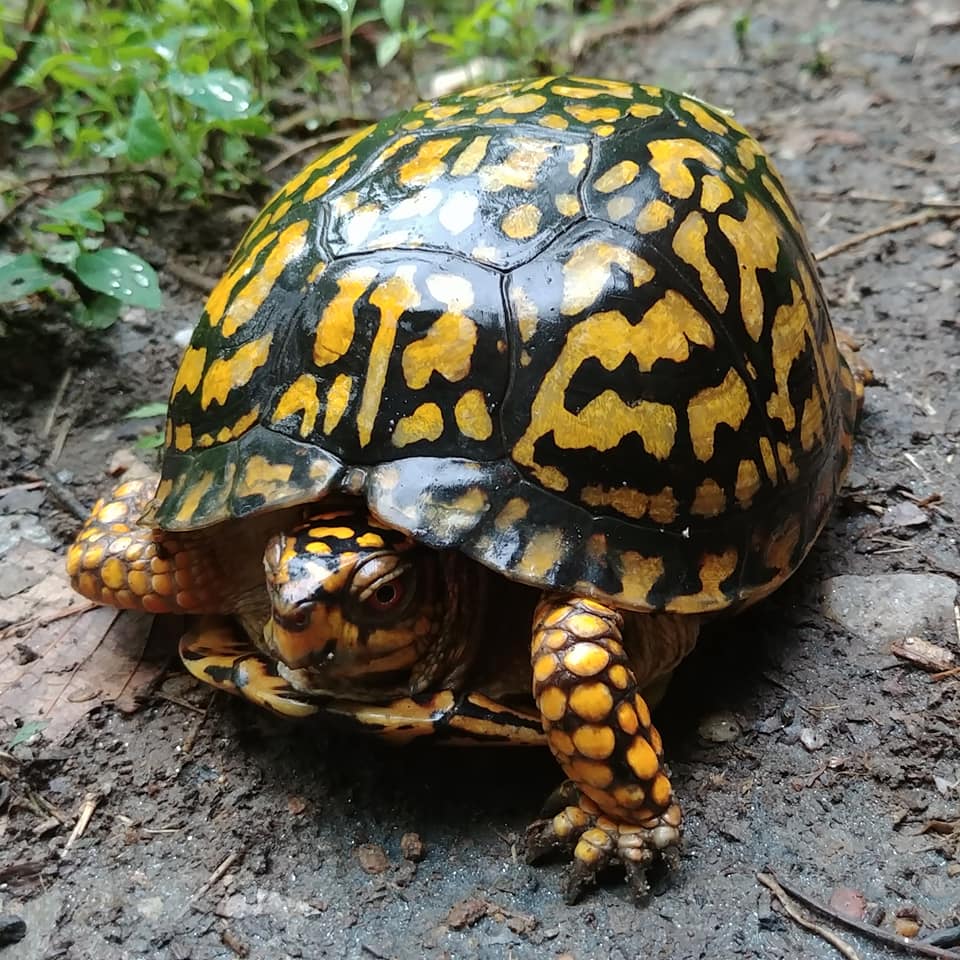
Male box turtles are often much more colorful than females. They also have red/orange eyes, while the females have brownish/yellow ones. When they are first born, all box turtles have brown eyes, but they will begin to change when they are five years old. Another identifying characteristic is the male plastron is concave, while a female’s plastron is flat.
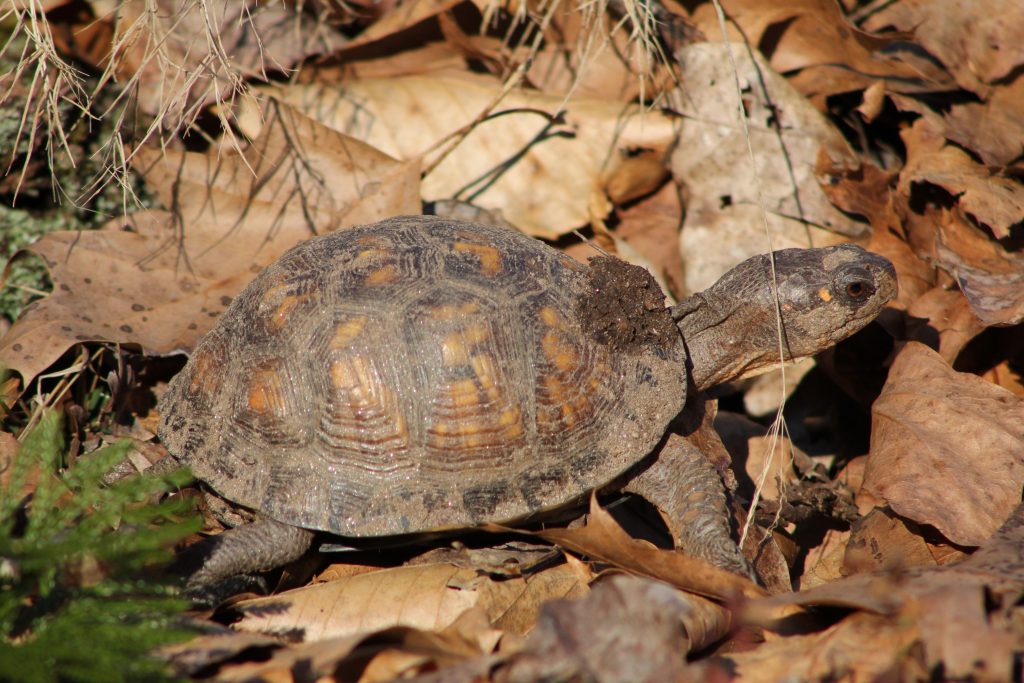
As a diurnal species, box turtles are more active exploring and feeding during the day. They eat a smorgasbord of plants and small invertebrates including worms, slugs, snails, bugs, berries, and leaves. They have triangular upper lips (called beaks – just like birds!) instead of teeth to crunch through their snacks. They also eat mushrooms, even poisonous ones. Turtles absorbs those toxins and can make anything that tries to eat it sick. That is why it is important to remember that if you are ever stranded in the wild, a box turtle actually may not be a safe source of food.
During hot days or seasons, box turtles seek out cooler areas, like the Bull Run Mountain springs and seepages, burrowing in the mud or under logs and leaf litter. These cold blooded reptiles will spend winter buried beneath the frost line, hibernating until the warm spring weather returns. Adult box turtles tend to have a home range they are most familiar with, and if they are relocated, they try to return to their known area. If you see any on the trails, take a picture of them and upload it to our Bull Run Mountains iNaturalist Project!
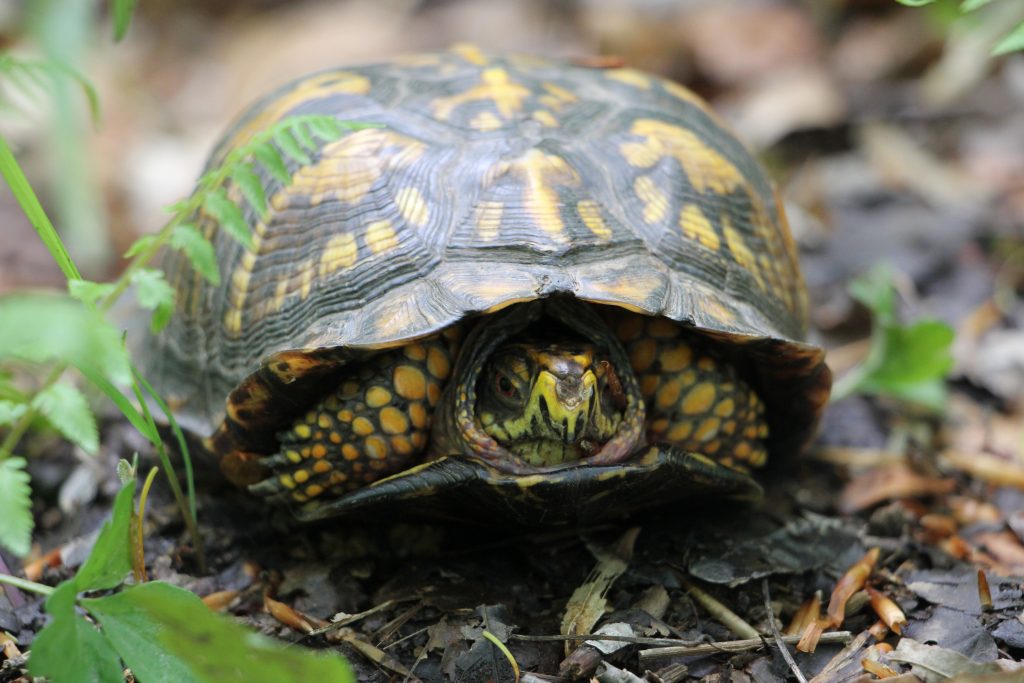
Box turtles are not listed as endangered or a species at risk, however, they are still threatened from habitat loss and fragmentation. Road crossings are another danger zone for these critters that look like rocks with legs. Although their hard shell is made up of plates of bone, it can still be damaged and even bleed if they’ve been run over or chewed on by a dog. If you see a boxie in the road, make sure to move them in the direction they were already facing. Make sure to wash your hands after the encounter, as many turtles carry bacteria on their outer skin and shells, like Salmonella, that can make people sick.
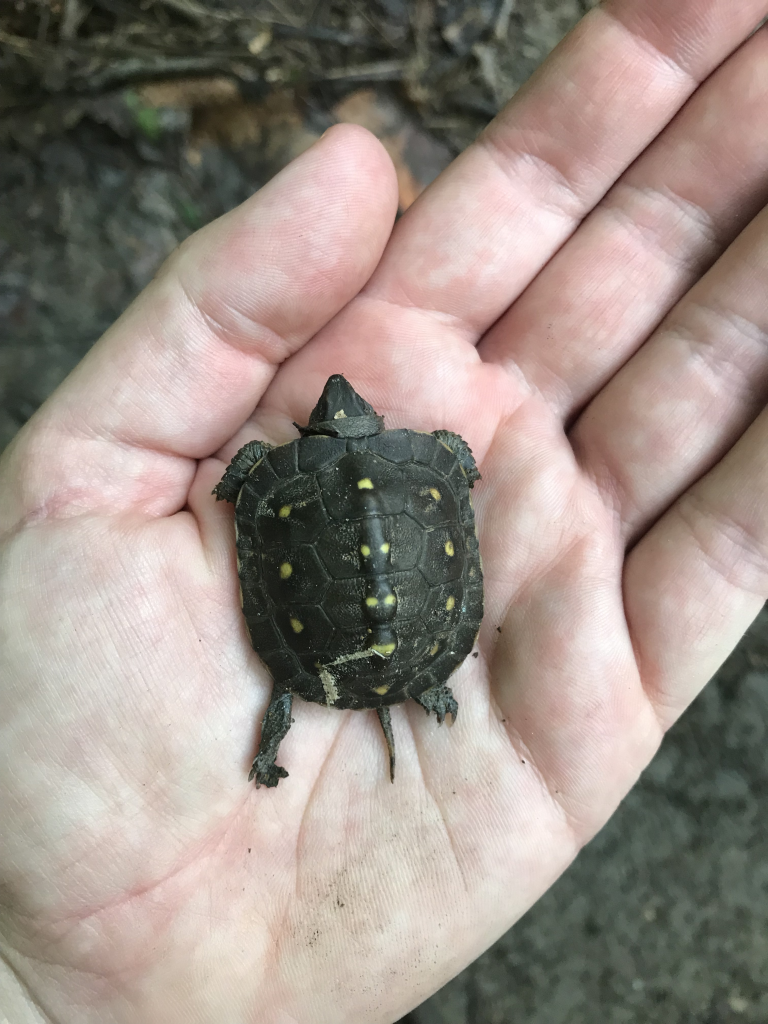
Box turtles are found throughout the eastern United States, however, they are sometimes living outside of the east coast. This can happen because turtles are very popular pets, and are threatened by poachers who illegally take box turtles out of the wild to breed for the pet trade. Such a pet is an extended commitment, considering how long they live. Some owners that do not want to take care of their pet turtles anymore, if they outgrow their small tank or the owners are moving, release the discarded pet to the wild. For a domestic turtle unused to fending for itself, it is extremely difficult for it to survive in a different environment. The better alternative is to drop them off at a local animal shelter/veterinarian, or listing them for adoption online such as at the Mid-Atlantic Turtle & Tortoise Society.

I just did a eastern box turtle rescue on a hot highway and relocated him. I rescue turtles all the time. 1st one in our area of South Bend In.
Please do not remove from the area, just help him cross the road! You can look this up, turtles have a home base and will be lost and in danger if moved to a different place even if it looks good to you. Learn about their needs and don’t imagine you know what is best for him before you try to help.
Leave a comment